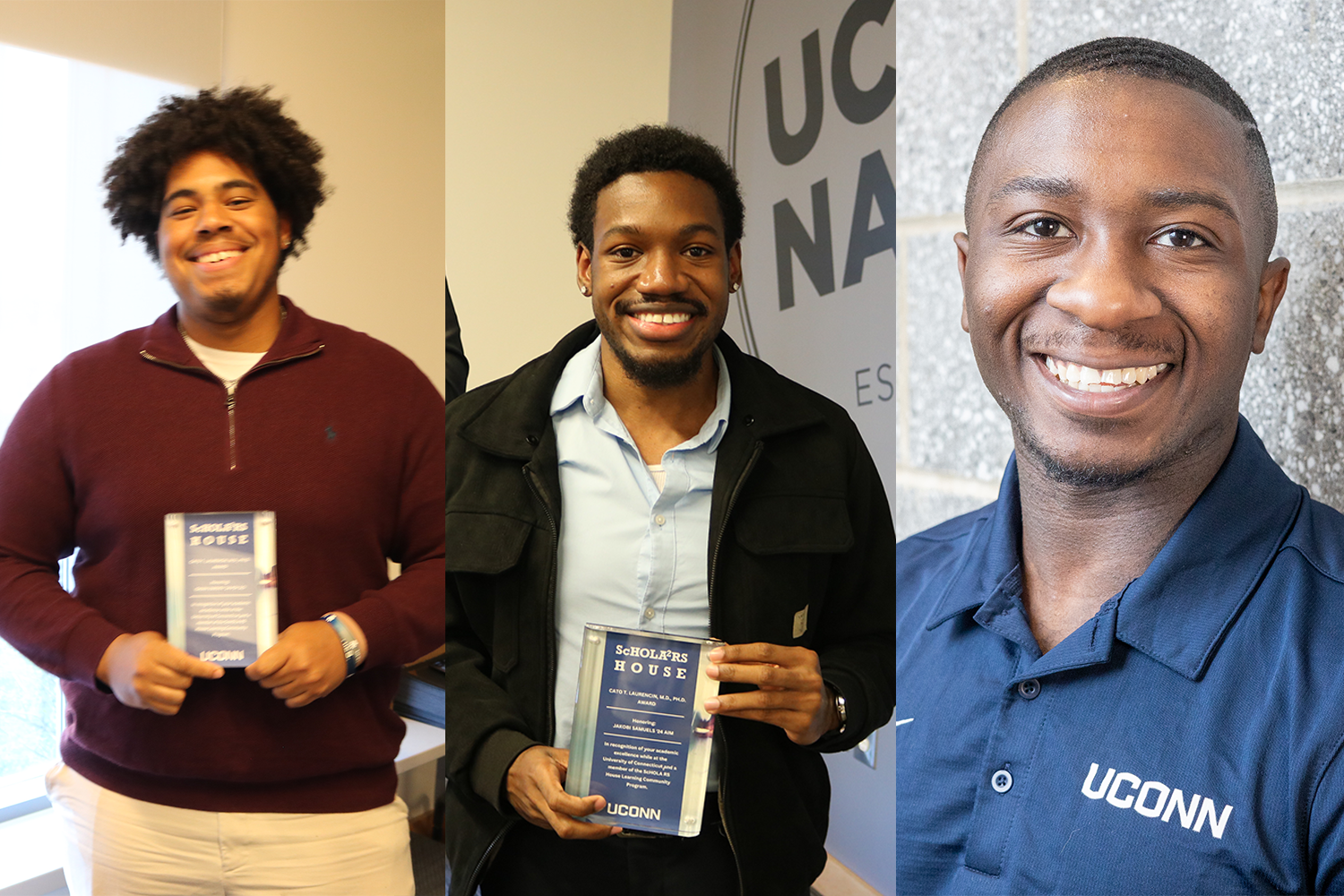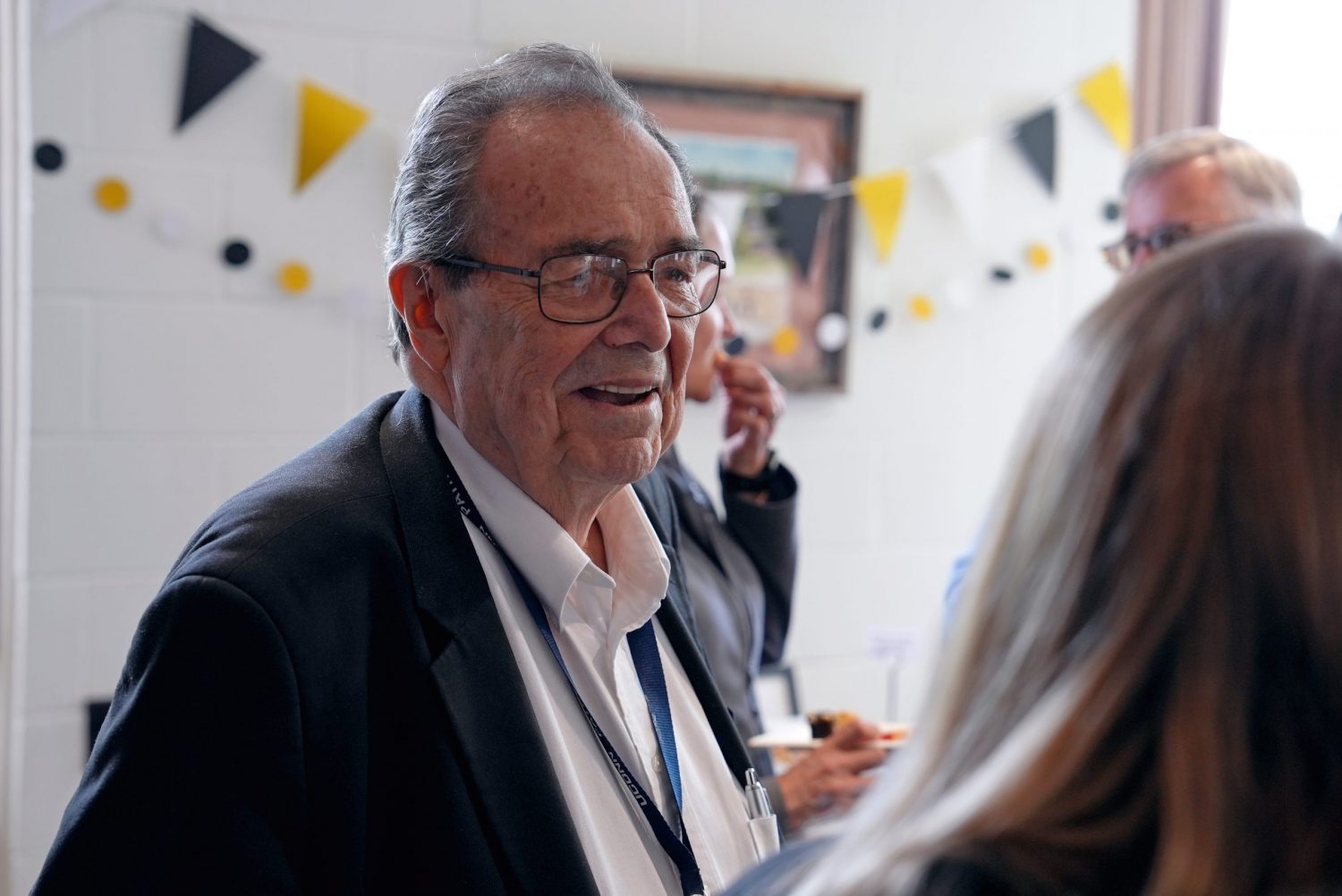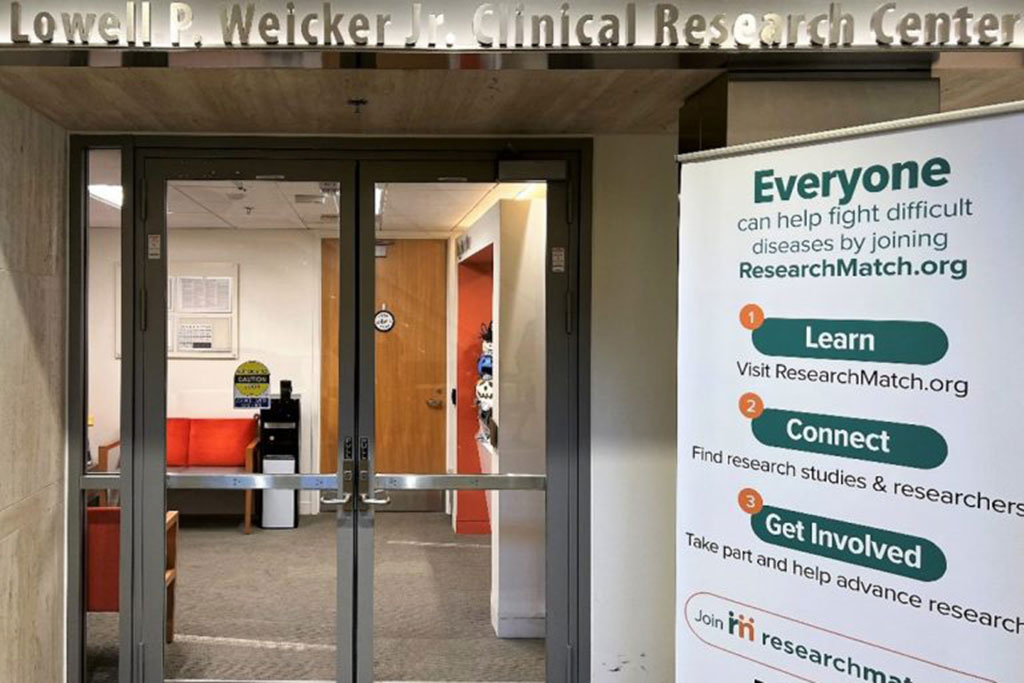 Dr. Mekonnen Gebremichael, assistant professor of Civil & Environmental Engineering, and a team of UConn undergraduate and graduate students traveled to Ethiopia during summer 2008 to install weather stations in the Beressa watershed of the Blue Nile basin region, about 75 miles from the capital, Addis Ababa. It was Dr. Gebremichael’s second expedition to Ethiopia in two years under a National Science Foundation-funded International Research Experiences for Students (IRES) research project.
Dr. Mekonnen Gebremichael, assistant professor of Civil & Environmental Engineering, and a team of UConn undergraduate and graduate students traveled to Ethiopia during summer 2008 to install weather stations in the Beressa watershed of the Blue Nile basin region, about 75 miles from the capital, Addis Ababa. It was Dr. Gebremichael’s second expedition to Ethiopia in two years under a National Science Foundation-funded International Research Experiences for Students (IRES) research project.
The work is part of a larger research focus on Ethiopian hydrology, in which Dr. Gebremichael is comparing data collected at specific ground-based sites against weather satellite data and hydrologic models to predict flood and other hydrological events. Accompanying Dr. Gebremichael were senior Terrence McAuliffe, recent graduate Nathaniel Bergan (B.S. May ’08), and doctoral students Menberu Bitew and Feyera Hirpa – all of Civil & Environmental Engineering. The team is partnering with faculty and graduate students from Addis Ababa University, who are involved in data collection and analysis.
The UConn students gained hands-on experience in the use of hydrological sensors, field preparation and design of experiments (geospatial and point data analysis involving GIS and remote sensing), data collection and analysis. Central to the IRES program is the provision that students engage in research conducted abroad; Dr. Gebremichael believes the work in Ethiopia will inspire inquiry-based learning and promote the development of globally-oriented scientists.
The team completed two major facets of the hydrology work. The first entailed the construction and installation of five permanent experimental weather stations across a 220 square kilometer (approx. 85 square miles) grid. The stations are equipped with various sensing instruments for measuring rainfall, air temperature and relative humidity, and soil temperature and water content at various depths. The second task involved placement of rain gauges in grids at two differing elevations for the collection of daily rainfall observations.
Before any data could be gathered and analyzed, the team was challenged by the physical demands of the tasks as well as lessons in diplomacy, cultural awareness and psychology. The team walked up to 10 miles/day across difficult terrain to the sites using GPS to guide them, laden with the weather instruments, fencing materials, barbed wire, and assorted construction tools. Setup of the permanent stations required the team to secure the permission of landowners and also educate them concerning the need to discourage others from disrupting the equipment, which is surrounded by barbed wire fencing. Mr. Bergan commented, “Some [landowners] demanded sums of money, and others sought assurances that the installations would not affect their crops and animals.” The pace of rural life also challenged the team, he said. “Waiting an hour or more was the usual, and our perception of patience was altered from the American perspective.”
 Dr. Gebremichael was particularly pleased that the team successfully installed and assembled the equipment before the onset of the rainy season. The sensors, which record data points every 15 minutes, were activated and collecting measurements throughout the monsoon season and will continue to do so year-round. The records will be accessed twice yearly for analysis. He said the arrays will allow scientists to better understand the land/atmospheric interactions and the hydrological processes underway, such as runoff. With two-thirds of the world’s rainfall occurring in the tropics, he said the tremendous energy released from precipitation profoundly affects climate and weather across the globe. A central objective of the research is aimed at improving the accuracy of models that predict precipitation, flooding and drought around the world.
Dr. Gebremichael was particularly pleased that the team successfully installed and assembled the equipment before the onset of the rainy season. The sensors, which record data points every 15 minutes, were activated and collecting measurements throughout the monsoon season and will continue to do so year-round. The records will be accessed twice yearly for analysis. He said the arrays will allow scientists to better understand the land/atmospheric interactions and the hydrological processes underway, such as runoff. With two-thirds of the world’s rainfall occurring in the tropics, he said the tremendous energy released from precipitation profoundly affects climate and weather across the globe. A central objective of the research is aimed at improving the accuracy of models that predict precipitation, flooding and drought around the world.
Besides the permanent stations, the team also installed 72 temporary rain gauges over a 72 sq. km region, with half placed in a grid at mountainous elevation and half in a lower elevation. The devices were unprotected and often placed in public access throughways. Mr. McAuliffe said that the “odd-looking objects” drew lots of attention and “Because we weren’t always able to talk to the landowners, we occasionally lost equipment.” Local high school students were engaged to take daily measurements at each gauge during the six-week rainy season; thus, Dr. Gebremichael’s research sphere was enlarged to embrace a greater number of Ethiopian students, who were excited by the opportunity to be involved in scientific research. The data will allow Dr. Gebremichael to identify hydrological variances among the sites and to gain a better composite picture of rainfall in the region. He will present the team’s experimental results at the International Precipitation Working Group meeting in China next month, and at the American Geophysical Union meeting in December.
Beyond the research experiences the trip provided, Mssrs. Bergan and McAuliffe said they were humbled by their work in Ethiopia. A newly-minted civil engineering graduate, Mr. Bergan was intrigued by Ethiopia’s construction boom. “To see how civil engineering is implemented in different parts of the world gives you an even better understanding of it. Although we in America may look at the engineering practices being used there and say they are inefficient and perhaps not up to our standards, these practices are being used to improve the lives of Ethiopians and change the country. The trip gave me the chance to see up close what it takes to provide infrastructure to a region that is seeing it for the first time. To see how people are changing their views and way of life due to civil engineering projects is amazing.”
 Mr. McAuliffe, who will graduate in December ’08 and hopes to begin a career in construction management, said that the project was “great preparation of the construction management field. There was an extensive amount of planning and scheduling that took place in order to accomplish as much as we had.” His enthusiasm was sharpened by the experience. “I hope the work we did will serve as a springboard to greater advances – from weather tracking and forecasting to having the ability to place more efficient hydroelectric dams – and provide a foundation of future improvements. As civil engineers, we can do more than build roads or design the beams in a shopping mall. It was great to see how civil engineering can work to benefit people in need.
Mr. McAuliffe, who will graduate in December ’08 and hopes to begin a career in construction management, said that the project was “great preparation of the construction management field. There was an extensive amount of planning and scheduling that took place in order to accomplish as much as we had.” His enthusiasm was sharpened by the experience. “I hope the work we did will serve as a springboard to greater advances – from weather tracking and forecasting to having the ability to place more efficient hydroelectric dams – and provide a foundation of future improvements. As civil engineers, we can do more than build roads or design the beams in a shopping mall. It was great to see how civil engineering can work to benefit people in need.
Dr. Gebremichael expressed his sincere thanks to NSF for its investment in his hydrological studies. Read more about this project on http://www.engr.uconn.edu/hydrostudiesnews.php and http://www.engr.uconn.edu/grg/.


